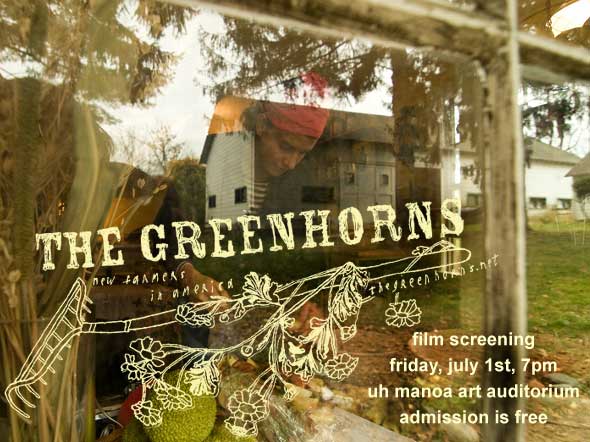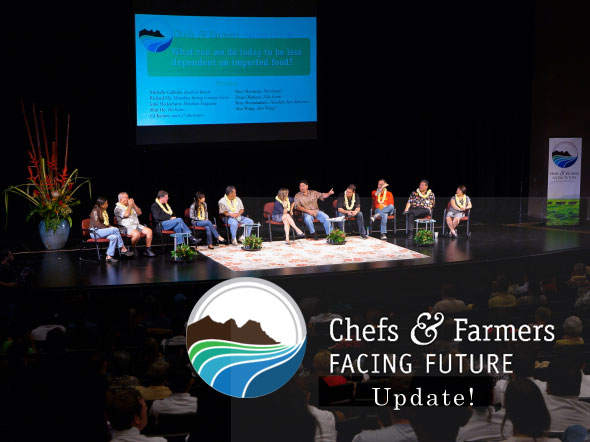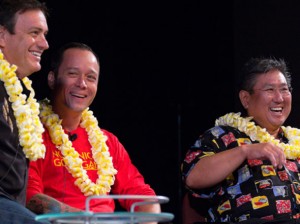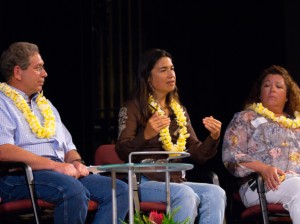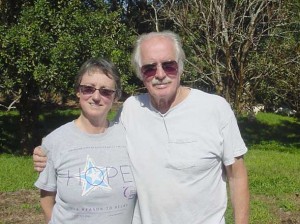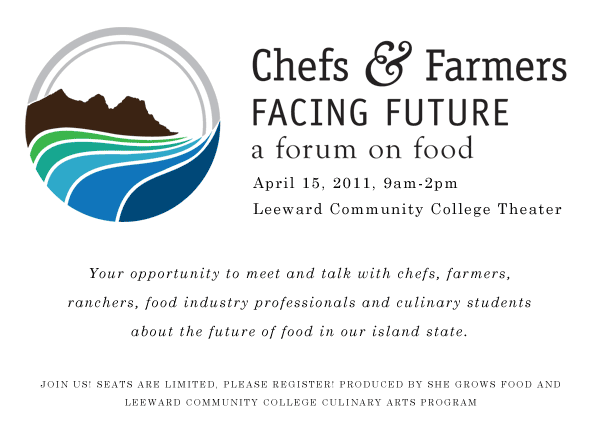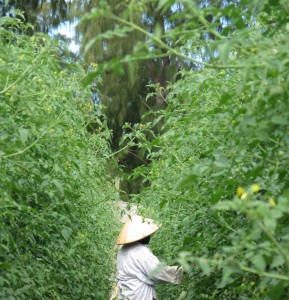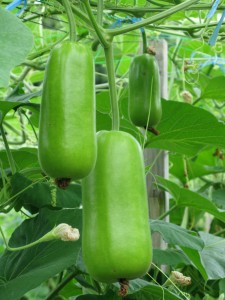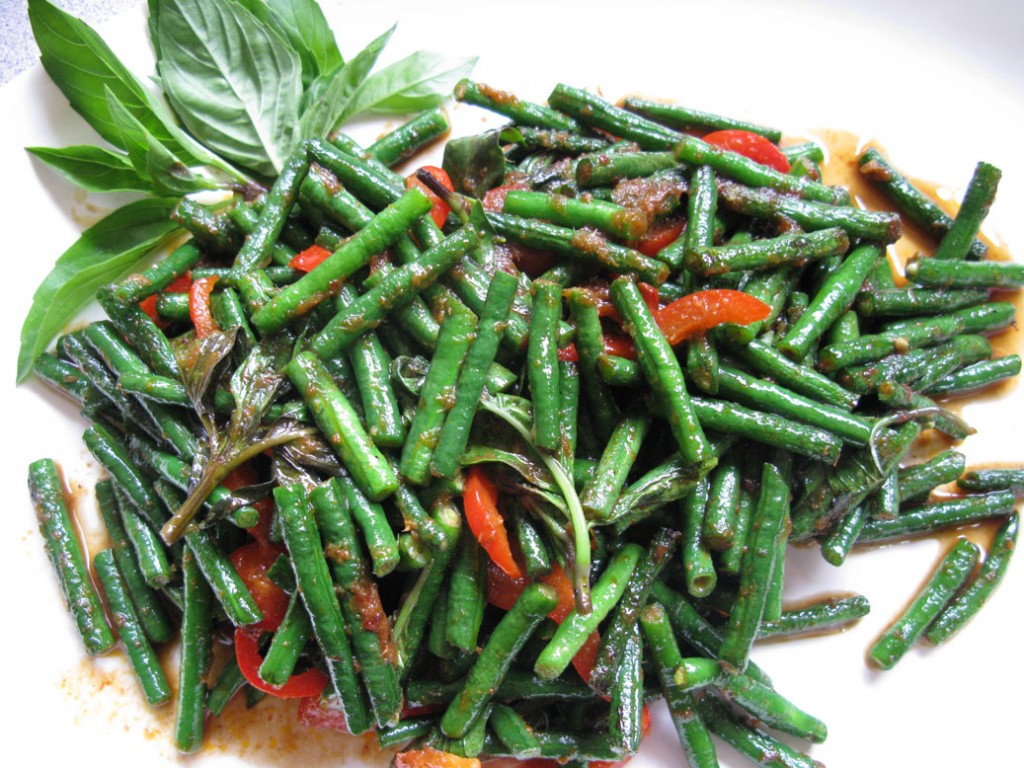I started to track the progress of farmer Severine von Tscharner Fleming’s film project “The Greenhorns” after reading Temra Costa’s groundbreaking book “Farmer Jane” (I recommend buying or borrowing it – my book review is coming soon.) Severine is profiled in the book as one of the many farmers behind the scenes of the national food and farming movement. I got on Severine’s film screening list and a year later feel very grateful to be able to bring it here to be seen.
With help from our friends at the Department of Art at University of Manoa and co-sponsor Asagi Hatchery, we present a screening of “The Greenhorns” on Friday, July 1st at 7:00 p.m. at the UH Art Auditorium (campus map). Seating will be first come basis, sorry no reservations. The film runs 50 minutes. Admission is free because we’re hoping to entice you into becoming a greenhorn, and anyway, greenhorns need to use their money for stuff like seed, tools and medical insurance.
The film documents the reemergence on our national landscape of the young American farmer – second and third generations coming back home to carry on the farm, brand new farmers diving in, and community-styled urban farms popping up. Severine takes us to farms on the East, South, and West Coast to visit and talk with young people slowly revitalizing their local food systems. It may look like a new kind of farmer and farming at first glance, but it’s not. What we see is a process of recovery of agrarian roots as small holding farms – diverse, direct market oriented, and localized – community oriented.
These stories paint a picture of resurgence in a time when agriculture is operating on a longstanding trend of farmer attrition and aging, and the rapid loss of farmland to development. The average age of a farmer in America is 57, and in Hawaii farmland is being lost to real estate development at an alarming rate as our family farmers retire. Why? Because most farmers in Hawaii have been boxed into commodity gate farming – relying on distributors to market their products, distributors who require our farmers to compete with mainland imports even though farming in Hawaii is more than triple the cost of farming elsewhere. In this paradigm, farmers can barely make ends meet and are sometimes forced to sell their land as a means of survival after retirement or injury.
“The Greenhorns” spotlights how some young agrarians are choosing to respond to the challenges of not just farming but of marketing, and how they are working to reverse negative trends in favor of healthy food, local and regional foodsheds, and the revitalization of rural economies, one farm at a time.
Secretary of Agriculture Tom Vilsack’s recent call for 100,000 new farmers is an encouraging sign of support from government bodies. With over 400 million acres of farmland poised to change hands over the next twenty years, it’s time to organize. The 2012 Farm Bill package of legislation is already in the pipeline. Severine’s work on this film has also given birth to a web-based network for young farmers to start organizing on a national level. This film puts it all in context.
We hope to someday visit Severine at her livestock and produce growing Smithereen farm in Hudson, New York.
My family’s business, Asagi Hatchery is pleased to be co-sponsoring this film. Not a day goes by at the hatchery without the delight of listening to someone share a deep-seated, sparkling wish to be able to live and work full-time on their own little farm. We support people who want to grow their own food and live simply!
So please come if you can. And let your dreams and the dreams of others, take hold.
Thanks for reading,
-Lisa
